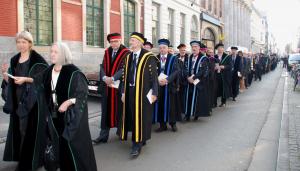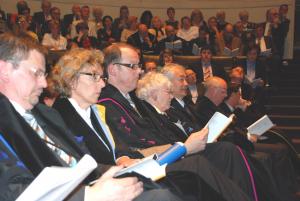In addition to the ITER Director-General, the
honoris causa title was awarded to Paula Semer, presenter and producer of many emancipatory broadcasting programs and a Belgian "institution"; to Masatoshi Takeichi from the University in Kobe, Japan, for his pioneering work on the key role of specific intercellular adhesion in morphogenesis; to the Dutch researcher Désirée van der Heijde for pioneering work that has helped to improve the quality of life of patients suffering from rheumatoid arthritis; to Arnoud De Meyer, rector of the Singapore Management University; to Paul Sackett from the University of Minnesota, a leading authority in the field of human resources management; and finally to the Dutch researcher Saskia Sassen, author of the book
The Global City, a highly original sociology of globalization.




